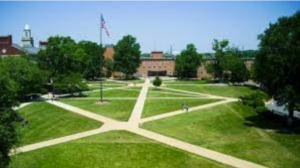[et_pb_section fb_built=”1″ _builder_version=”4.16″ custom_padding=”6px|0px|20px|0px|false|false” global_colors_info=”{}” custom_margin=”||-25px|||”][et_pb_row _builder_version=”4.16″ background_size=”initial” background_position=”top_left” background_repeat=”repeat” custom_padding=”27px|0px|27px|0|false|false” global_colors_info=”{}”][et_pb_column type=”4_4″ _builder_version=”4.16″ custom_padding=”|||” global_colors_info=”{}” custom_padding__hover=”|||”][et_pb_text _builder_version=”4.20.0″ background_size=”initial” background_position=”top_left” background_repeat=”repeat” hover_enabled=”0″ inline_fonts=”Verdana” global_colors_info=”{}” sticky_enabled=”0″]
Black History Month is the ideal time to recognize an important, groundbreaking figure in landscape architecture and one of the first African-American trailblazers who made a lasting impact in the United States landscaping industry.
Today, we celebrate the life of David Augustus Williston, the first professionally qualified African-American Landscape Architect in the U.S. Williston left an indelible mark in the field of landscape architecture.
Williston was born in Fayetteville, NC, and later attended Cornell University. While there, he was a part of the Horticultural Lazy Club, informally known as “Bailey’s Boys” in the late 1890s, where his love of plants grew into substantial plant propagation and cultivation expertise (the red arrow points to Williston pictured below).
Upon graduation, he became the first African American with a BSA degree in horticulture and the first professional Black landscaper in the United States. After Cornell, his first employment was as a teacher at the State College of North Carolina at Greensboro.
According to the Cultural Landscape Foundation, at the onset of the Great Depression, Williston started his own firm in Washington, D.C.
Williston worked as a site planner and operated as a campus landscape Architect for various Black colleges, along with the expansion of Howard University in collaboration with architect Albert Cassell. He also worked on the landscape design and site plan for Langston Terrace Housing Project. The first-ever federally financed housing project in Washington D.C.
Williston was also extensively involved in the site planning of Booker T. Washington’s Tuskegee Institute with African American architect Robert R. Taylor to plan the layout and continued to consult on the design of the Tuskegee Institute from 1929 through 1949.

He did all the above while teaching African-American college students horticulture.
What makes Williston especially impressive is that he did not have access to white-owned nurseries in the South because of Jim Crow laws. Instead, he would seek out native plants in the woods and cultivate them himself independently.
Williston continued to work well into his early 90s. He advocated for creating better working conditions and opportunities for other Black landscapers, stressing the importance of landscape architecture and horticulture in the African American community. He helped to create a space for other Black landscapers and horticulturists.
We are forever grateful for the trailblazer pioneer David A. Williston and thank him for his contributions to the landscape architecture industry. He symbolizes how hard work and dedication can lead to success.
His commitment to equality and his innovative designs have had a lasting impact. His legacy continues today and has paved the way to inspire future generations of African American Landscaper Architects.
[/et_pb_text][/et_pb_column][/et_pb_row][/et_pb_section]


